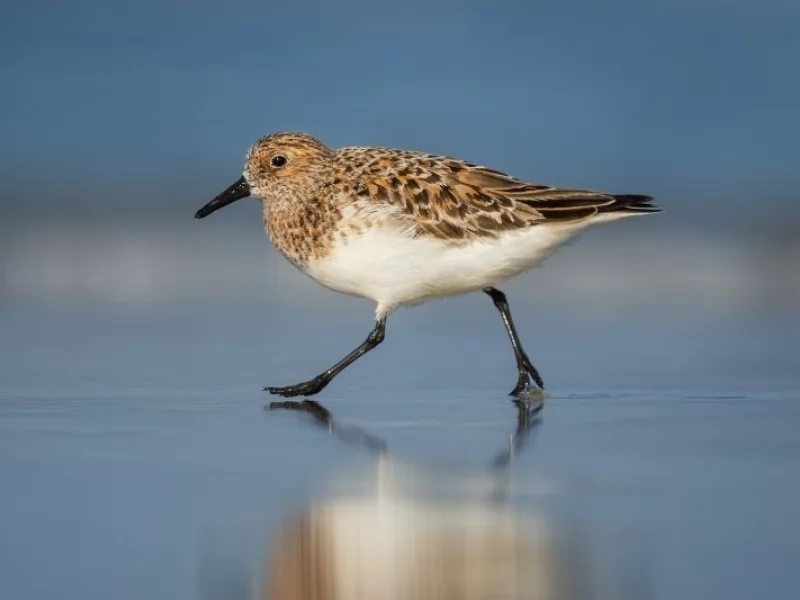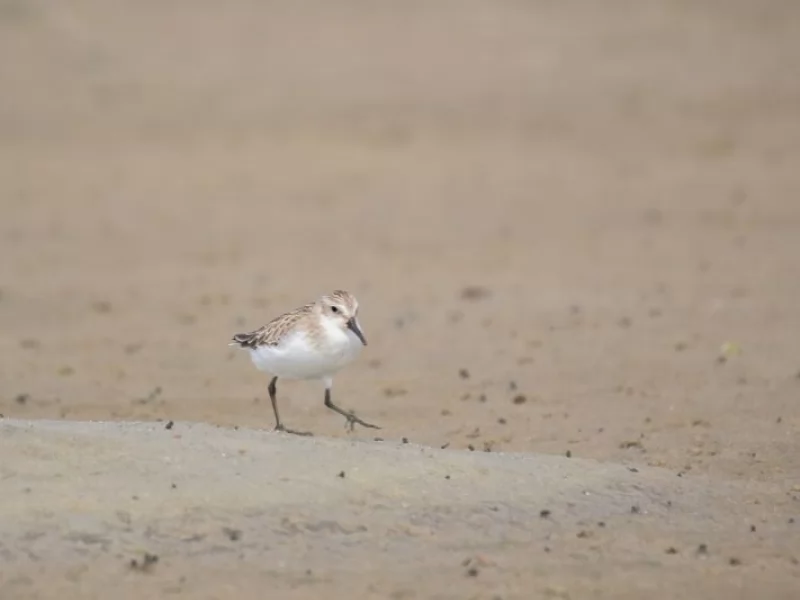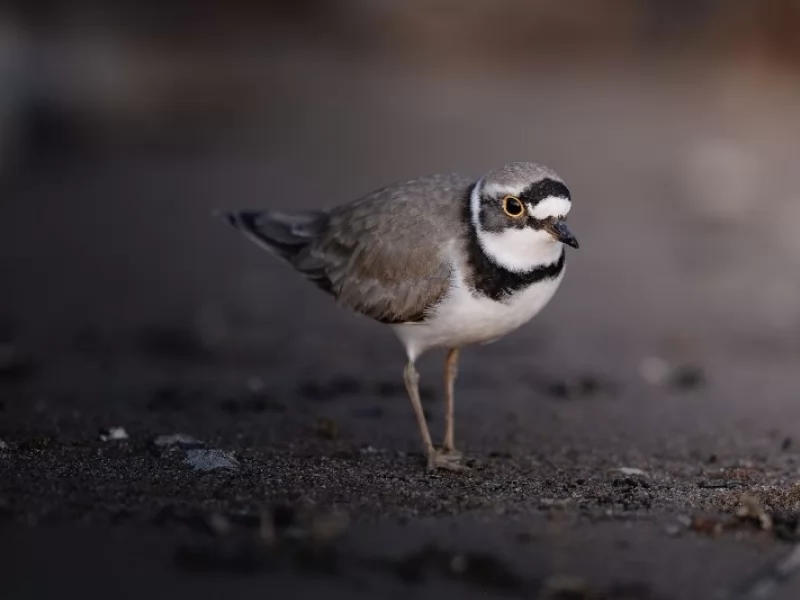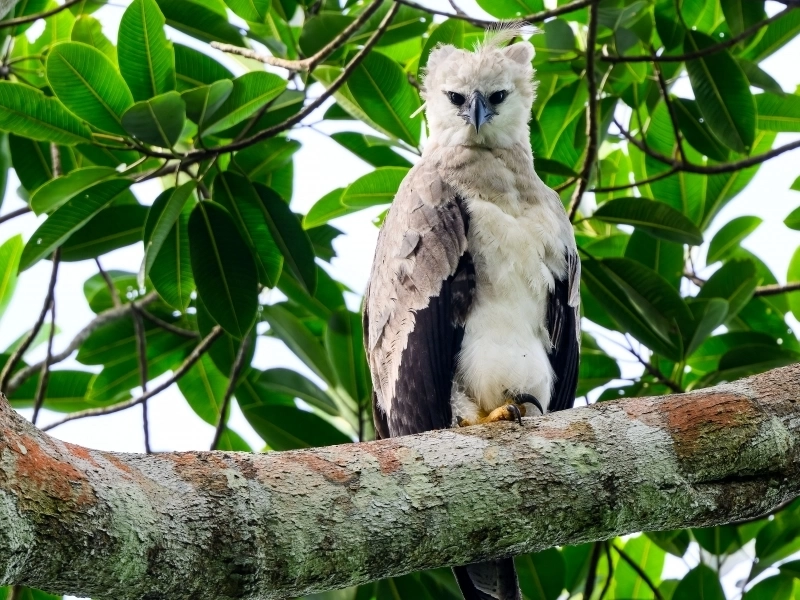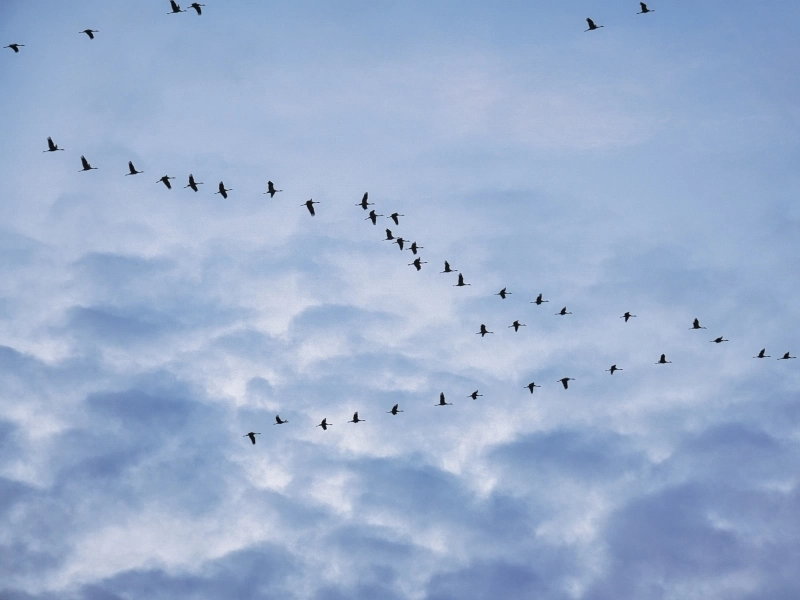News and Testimonials

Shorebirds
The best show in summer.
When wife Linda and I first started dating, we, of course, asked each other the requisite questions:
What’s your favorite color? Blue.
Who’s your favorite singer? Joni Mitchell.
What’s your favorite season? Winter.
“Not summer?” she asked, not quite believing me. “I hate summer,” I replied. “The heat, the humidity, the mosquitoes…”
But that was then, before moving to shorebird-rich South Jersey.
Growing up in North Jersey, I discovered that the summer heat bakes the song out of the syrinx of woodland birds by mid-June, and walks through toasted summer woodlands are made all the more oppressive by that silence. Oh, sure, every once in a while, an American Crow sounds off or a squadron of Blue Jays make the air ring with brayed insults levied at whatever happens to afflict jays at the moment. Usually, it is only a curiously twisted branch or an empty cavity where once a screech-owl had been. But mostly what I heard on those hot summer outings was silence that added layers of insult to the sultry sunbaked air.
Even the Brickyard Ponds a quarter-mile from home offered no relief from the summer doldrums. Canada Geese had yet to establish, and the steep cut banks offered no shallows for Great Blue or Green Herons to forage. So, on the hottest days, I simply stayed indoors and read books, counting down the days till autumn migrants would enliven my woodlands with movement, if not song.
Then I moved to Cape May and into a whole new world of wonder and excitement. Summer means shorebirds. Failed breeders arrive as early as late June, successful breeders flood marshes in July, and juveniles appear in August and September.
Until Cape May, my experience with shorebirds was limited to three species: Spotted and Solitary Sandpipers, which showed up in May, and the Killdeer that tried every spring to nest somewhere near home plate on our school baseball field. But Cape May in the summer of 1976 was a summer of discovery. The South Cape May Meadows and Bunker Pond were my windows into an exciting new chapter in birding: shorebirding. Every day found more and different arrivals and ample opportunity for study.
Greater and Lesser Yellowlegs, side by side, surrounded by Short-billed Dowitchers. It was there that I first noted the different feeding behaviors that distinguish the birds at any distance. Greater Yellowlegs are loners that charge around stabbing at the water. Lesser Yellowlegs pick at the surface and are more social. Dowitchers cluster and probe with metronome regularity. Stilt Sandpipers stitch the water with rapid jabs and (often) heads submerged. Solitary Sandpipers move methodically through the shallows, where Spotted Sandpipers race along the shoreline.
Peeps? Yes, plenty. They were more challenging than the larger shorebirds, but even without a spotting scope, it was evident that Least Sandpipers were relegated to the drier edge of the pond and that Semipalmated Sandpipers liked to keep their feet wet. Western Sandpipers? A few, with most adults in heavy molt. Sanderling, Red Knot, and Semipalmated Plover? These species preferred the sandy beach, and Western Sandpiper sometimes joined them.
Best of all were the members of the grassland guild. The South Cape May Meadows was really a meadow in those days, the grass close cropped by Les Rae’s voracious cows. Upland Sandpipers were an everyday occurrence. American Golden-Plover a rare treat. In August, small flocks of Buff-breasted Sandpipers would settle in for a day or two. Looking like golden-brown crop-tailed doves, the winsome birds allowed close approach, which was much their undoing during those terrible market gunning days when hundreds of thousands of Buff-breasteds were slaughtered on the prairies in spring, packed in brine-filled barrels, and shipped to eastern markets.
Early accounts record an abundance of Buff-breasteds. But abundant or not, year-by-year market gunning thinned the ranks of northbound birds. The Migratory Bird Treaty Act of 1918 came in time to save the Buff-breasted and golden-plover from extinction but, sadly, not Eskimo Curlew. Today, the only curlew to visit Cape May is Whimbrel, whose flocks kick off the fall shorebird season in late July.
Godwits, phalaropes, greenheads
Godwits? Both Marbled and Hudsonian are rare and a special treat. Hudsonian migrates in V-shaped flocks well offshore in early September. Once during strong easterly winds, I spotted a flock whose identification was only secured by using a spotting scope.
Phalaropes? Wilson’s is uncommon but regular. Red-necked rare. Red? You’ll need a pure heart and a lot of luck, but one year, a well-oiled female spent the summer in the Meadows. Not too many years ago, I spotted a streak-backed phalarope flying across Bunker Pond and yelled out to all assembled on the hawk watch: “Incoming Red-necked Phalarope.” Fortunately, or maybe not, Tom Johnson had the presence of mind to photograph the bird as it passed and presented me with the crisp, clear viewscreen image of a juvenile Red Phalarope. Oh, well. I guess I’m still learning shorebirds.
As for summer. I like it a lot better since I discovered shorebirds. The New Jersey heat is still oppressive and the humidly stifling, but instead of mosquitoes, I now have to contend with the evil greenhead fly, top predator in coastal marshes. When deer flies bite, you say “ow,” but when greenheads get their fangs into you, you use expletives.
Only a fool wears shorts here in summer. And greenheads have been known to snip right through new denim.
Shorebirds are an acquired taste, but for birders-in-the-know, they are the best show in town in summer. But you need not travel to coastal New Jersey to savor the southbound passage of migrating shorebirds. Fall migration is continent-wide. From late June to September, any drought-stricken reservoir will draw shorebird migrants. The morning after the passage of a cold front is best. Wastewater treatment facilities also lure migrants, as do sod farms and recently mowed fields. Spotting scopes are near requisite, and The Shorebird Guide by Michael O’Brien, et al., will help you sort out the players, although I find the plates in the Sibley Guide to Birds immensely useful, too.
I still hate summer heat, but having discovered shorebirds, I now have no excuse to sit indoors under the AC and wait for fall migration. Of course, if you live near a national wildlife refuge, you can drive the auto loop and have shorebirds and AC, too. Keep the car chilled, and you can roll down the windows and freeze the hearts out of half a hundred greenheads.
Shorebird distribution is governed mostly by the abundance of prey. They go where small invertebrates abound and water levels are calibrated to leg and bill length. At high tide, the birds seek higher ground; on a falling tide, they come out to forage.
Perhaps the best thing about shorebirds is the hours they keep. All day, every day for as long as migration lasts. Watch for hunting falcons and harriers to guide you to a concentration. When hawks are on the prowl, shorebirds take to the sky, often gathering in tight wheeling flocks, and appear like puffs of smoke on the horizon, a smoke signal to discerning eyes that reads: hunting raptor here. Look below the flock. Many falcons employ what is called a “ringing up” maneuver. Forcing shorebirds higher and higher until one weaker member of the flock breaks rank, and predator and prey become one.
This article was published in the “Birder at Large” column in the July/August 2022 issue of BirdWatching magazine.
Source: https://www.birdwatchingdaily.com/news/birdwatching/shorebirds-show-summer

